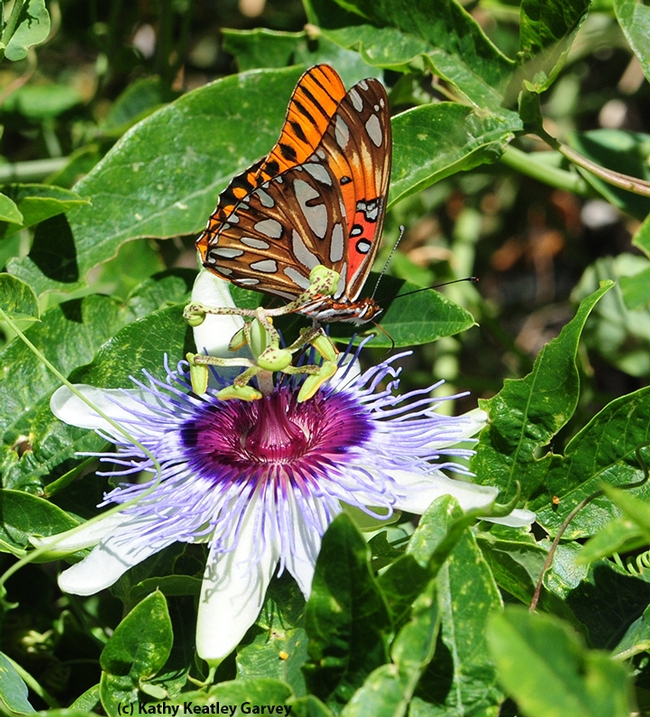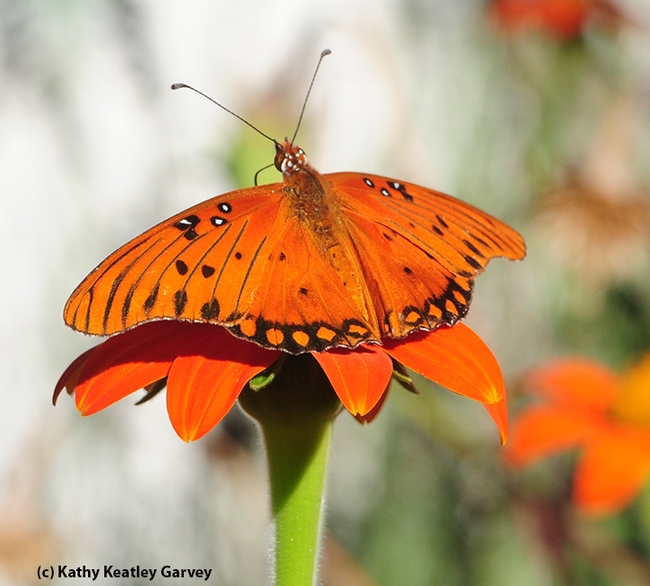Strange weather we're having here in Central California.
After soaring into the 90s, the temperatures pushed again into the 80s today (Oct.21). The Gulf Fritillaries (Agraulis vanillae) are "making the most-est" of their host plant, passionflower vines. Blossoms keep popping up like so much popcorn. And the Gulf Frits are there to lay their eggs all over the plant, including the tendrils, leaves, stems and blossoms.
The showy reddish-orange butterfly with the silver-spangled wings is a favorite this time of year. It's sort of like a Halloween gift before Thanksgiving.
We remember when it vanished in the Sacramento-Davis area and was even considered extinct around here in the early 1970s.
Butterfly expert Art Shapiro, distinguished professor of evolution and ecology at the University of California, Davis, sounded the alarm back then. He knows its history well.
“It first appeared in the vicinity of San Diego in the 1870s,” he told us. “It spread through Southern California in urban settings and was first recorded in the Bay Area about 1908. It became a persistent breeding resident in the East and South Bay in the 1950s and has been there since.”
Since 2000, the Gulf Frit has been recolonizing again throughout the area. Thankfully!
The butterfly lays its eggs only on passionflower vines (genus Passiflora)--lots of eggs--so expect the caterpillars to skeletonize the plant. It's a good idea to offer some nearby nectar for the adults, too. Their favorites include the butterfly bush, Mexican sunflower (Tithonia) and lantana.
Let's see, fall began Sept. 23, and winter arrives Dec. 21.
For the Gulf Frits, it might as well be spring!
Attached Images:

A Gulf Fritillary (Agraulis vanillae) lands on a passioinflower blossom. (Photo by Kathy Keatley Garvey)

Close-up of a passionflower vine blossom. Passiflora is the host plant of the Gulf Fritillary. (Photo by Kathy Keatley Garvey)

Like a flamenco dancer, the Gulf Fritillary is showy. Here it is on a Mexican sunflower (Tithonia). (Photo by Kathy Keatley Garvey)